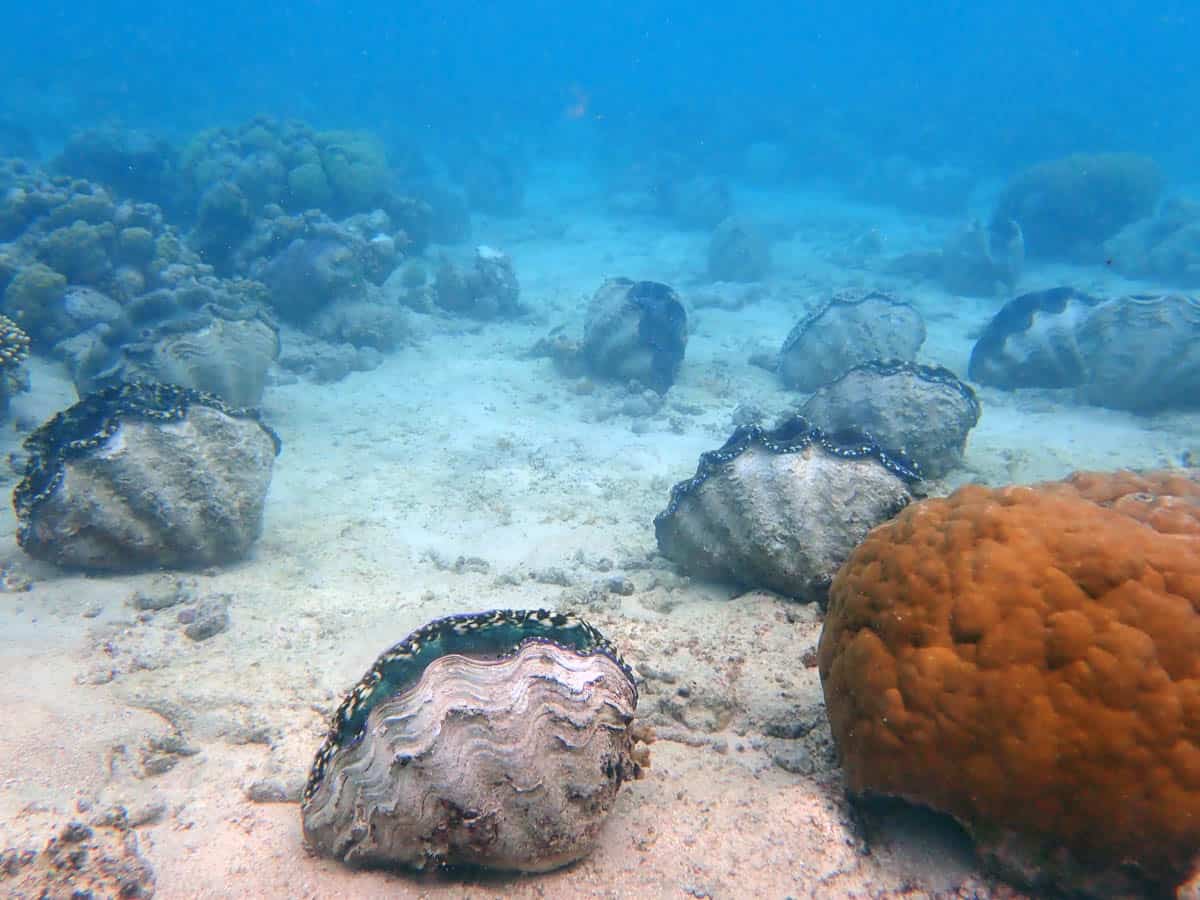
In the far western reaches of the Pacific Ocean, you can go diving in Yap. The small, remote island of Yap sits amid a rich coral habitat that is home to some of the largest sea creatures in the world.
DIVING IN YAP WITH MASSIVE MANTA RAYS & GIANT CLAMS
Divers come to Yap from all over to swim with the resident population of manta rays that have a wingspan of up to 13 feet and weigh upwards of 1,500 pounds.
But there are more giants to see when diving in Yap. The giant clams with their scalloped, colorful lips, or mantles, turned upward from their permanent anchorage amid the coral, are also found in the warm waters of this far-off island.
Listed as “vulnerable” by marine conservation organizations, the clams are often among the sightings most treasured by visitors to Yap’s shores who plunge into the rich environment.
CONSERVATION OF THE GIANT CLAM
One of four island states in the Federated States of Micronesia, Yap is known to have one of the most well-preserved cultures in the entire region, and ocean conservation is an important part of the life of the Yapese who rely on sustainable aquaculture practices for their food supply and the economy.
In 2015, a community-managed network of Marine Protected Areas was formed by government agencies, non-government conservation and resource management groups, and community members.
Among the sanctuaries in the MPAs is the Waloy community’s giant clam farm situated within a 151-acre marine area where these mammoth shells are protected from poachers to live longer lives, reproducing and repopulating their home.
The community of Tamil has a giant clam farm, as well, under the auspices of the Tamil Resources Conservation Trust.
MEET THE GIANT CLAM FAMILY
Among the species found in the farms are the Bear Paw clam, also known as the Horse Hoof clam or Strawberry clam (Hippopus Hippopus), the Noah’s giant clam (Tridacna noae), and the Smooth giant clam (Tridacna derasa).
Depending on the species, they can live up to 100 years, grow up to four feet across, and weigh up to 500 pounds or more. Spending their entire lives adhered to one place in flat coral sand or broken coral, the clams serve as nurseries and refuges for fish and other marine life.
The exposed mantle, or soft tissue, of a giant clam exhibits a combination of bright colors and patterns caused by the algae in its system and may include yellow, green, iridescent blue or purple.
Using a siphon to filter the water and consume the plankton that passes by, their diet also consists of the sugars and proteins produced by the algae. The algae, in turn, is rewarded with a safe home and access to sunlight for photosynthesis.
MYTHS OF YAP
Among the rich oral history of Yap is the myth told by a local storyteller about how a giant lizard and a clam formed the island:
Is diving in Yap with giant clams dangerous? It is said that giant clams can trap divers and kill them, but this is also a myth. The adductor muscles are used to close the shell and, according to scientists, take too long to shut in defense of the intrusion while giving the diver who accidently bumps into a clam enough time to pull away.
Comments are closed